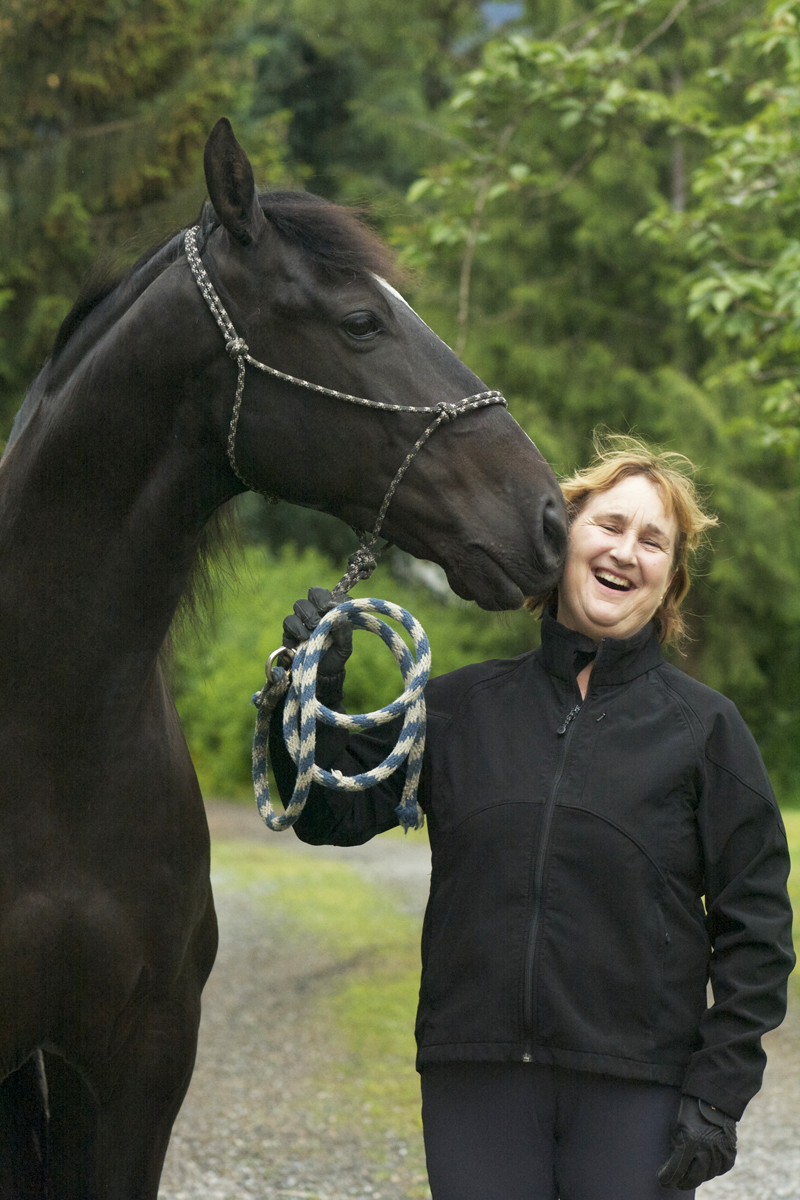As a young and serious rider my teacher would often tell me, “You need to work on your transitions more.” I’d do as I was told, but I never really understood why. I didn’t find them easy or fun, and neither did my horse. Now I’m wearing the instructor’s hat, and when a student complains that their horse rushes around, is sluggish, crooked, tense, or against their hand, I’m the one saying, “You need to do more transitions”.
What Transitions Accomplish
Riding transitions between gaits (and within a gait) reveal whether your horse is on the aids (sometimes called “on your seat”) or not. If your horse isn’t, transition training improves this issue. For example, if you’re constantly pulling on the reins to keep your horse in a collected canter, your horse is not on the aids and needs to work on transitions.
At the other end of the spectrum, if your horse falls out of the canter or trot, moving to a lower gait, then your horse is not on the aids. This is the case if you have to constantly kick or squeeze to keep your horse trotting or cantering. Take your legs off your horse. Does he stop moving? Horses should have cruise control and keep moving until asked to slow. Constant leg pressure to keep them moving forward creates a sour, unhappy horse (and rider). Training transitions helps this issue by tuning your horse up to react correctly to your leg aids. You ask, he goes, you quit asking. Repeat until the horse maintains the rhythm and gait.
Repetitive transitions strengthen and supple your horse longitudinally (from ears to tail). A well-ridden downward transition demands that the horse lower his hindquarters, round his back, and move his weight back over his hocks, much like riding downhill. An upward transition asks the horse to push with his hindlegs, like riding uphill.
Transitions ridden repeatedly will build muscle, much the way repetitions lifting weights will build our muscles. Keep this in mind when working an out of shape, pudgy horse. Transitions are a good way to pack a lot of effort into a short training session.
What’s A Good Transition?
For a transition to do its job you must ride a good transition, not a sloppy one. So, what makes a good transition? It must be straight, (no wiggling haunches, overbent neck, or popped shoulders) and the horse must move from one pure rhythm to another. In other words, when moving from trot to canter the horse must not “run” in the trot until he breaks into the canter. He needs to move from his regular trot or jog directly into canter. Yes, it’s hard and takes a lot of practice.
Also, the rider’s aids shouldn’t be obvious in well-ridden transitions. Lots of kicking to achieve an up transition is not the idea, nor is pulling on the horse’s face, and contracting the neck the way to get a good down transition. The horse must move to the lower gait in response to the rider’s seat.
Every transition has a preparation phase. Think of a down transition from canter to walk or halt. It takes a number of strides of preparation to do that well. But also, for an up transition the horse needs some warning such as straightening and preparing his body.
Exercise 1: Transitions within the gait
- Begin on a circle at the walk in either direction.
- Vary your gait. Begin in a medium marching walk, then bring it down to a slow/small walk, then go back to medium walk, and finally to lengthened or free walk. This is harder than you might imagine. You must stay supple, follow the motion of the head and neck, use your seat and legs to control the horse, and continue to ride a uniform circle. Then try this in trot—working trot, medium trot, collected trot, lengthened or stretchy trot. Only after you and your horse are good at transitions within the walk and trot should you try them in the canter.
Exercise 2: Transitions from one gait to another gait.
Begin by riding walk-to-halt transitions until the horse halts easily from the seat and walks forward willingly in a correct four-beat rhythm. Don’t pull back on the reins! Learn to use your seat. When walk/halt/walk transitions are easy, move to walk/trot/walk or halt/trot/halt. Canter/trot transitions will follow when the ones in the lower gaits are going well. Always think forward when riding into a lower gait.
Transitions train your horse both extension and collection and give him the strength to accomplish this. They result in less use of hand and leg and a horse who’s more attentive and tuned to his rider. Dancing with your equine partner comes from many transitions.
See this article in the October 2021 online edition:
https://magazine.nwhorsesource.com/october-2021/

Kim Roe grew up riding on the family ranch and competed in Western rail classes, trail horse, reining, working cow, and hunter/jumper. She trained her first horse for money at 12 years old, starting a pony for a neighbor.
Kim has been a professional dressage instructor in Washington state for over 30 years, training hundreds of horses and students through the levels. In recent years Kim has become involved in Working Equitation and is a small ‘r’ Working Equitation judge with WE United.
Kim is the editor of the Northwest Horse Source Magazine, and also a writer, photographer, and poet. She owns and manages Blue Gate Farm in Deming, Washington where she continues to be passionate about helping horses and riders in many disciplines.
